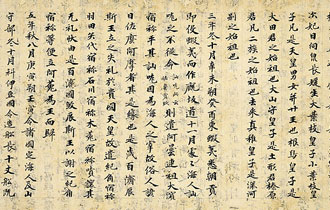Pages
|
Which brings us back to the beginning. The Western imperialist impact on Japan set in motion a series of events: the rise of Japanese nationalism, of Japanese economic and military power, of Japan's quest for an empire, of Japanese emigration to America and elsewhere, and of the Western reaction to all of these things, that led almost a century later to Pearl Harbor. One cannot say that Pearl Harbor was the "inevitable, delayed rejoinder" to Perry's visit in 1853-far from it. In fact, as we have seen, there were two basic approaches Japan took in its relations with the British and Americans-the cooperative and the autarkic approaches. Unfortunately for Japan, those who wanted Japan to follow an autonomous, independent approach to dealing with the world won out after 1936 and led Japan into a disastrous war. After Japan's defeat in 1945, its postwar leaders returned for good to cooperative policies of men like Takahashi.
Richard J. Smethurst
Pages
|











